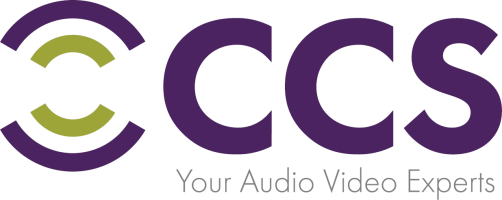In today’s fast-paced and ultra-competitive world, businesses and corporations are looking for ways to utilize technology in a more efficient manner. This is particularly evident when technology used for meetings or video conferencing is outdated, requires too many plug-in cables and remotes, or has poor sound and visual quality. Navigating these technological challenges is time consuming and if unresolved, meetings may be delayed or cancelled, resulting in customers getting frustrated and considering taking their business to a competitor. The potential for lost revenue and diminished status of your company’s reputation could cause your business to suffer due to inefficiencies associated with your technology platforms and infrastructure.
Crestron Flex has positioned itself as an industry leader in offering high-end technology that helps accelerate the ways in which information is shared internally within a business or how content is externally deployed to customers. Whether your meeting is scheduled far in advance or is suddenly arranged to put out some “emergency fires,” the primary goal of your business should be to establish unified communication with technology that supports the successful flow of information and collaboration. A prominent feature among Crestron’s impressive line of products is its digital signage platform, where you can present content for your business on LED screens for internal and external purposes. This is accomplished through integration with NEC display solutions, a global leader in visual technology innovations.
Digital signage is nearly in all aspects of our lives, whether it’s displaying information for the public, promoting products and services, or growing a brand’s presence in a competitive industry, it surrounds us constantly. The meeting room of a growing business serves an essential purpose, especially when the goal is to plan how information will be strategically integrated through platforms such as NEC display solutions. Customers need to see a visual representation of the products and services your business has to offer, in addition to reading clear and concise content that characterizes your unique brand. Whether you’re engaging customers in the conference room of your office or drawing customers to your booth at a mega conference attended by thousands, how you use technology can determine if you will make the sale and/or land the new account.
We understand the importance of having technology work in a way that saves you time throughout the work day. The Crestron Mercury device, an all-in-one technology platform, is another solution-based product that sets the standard for easy interactive collaboration and communication. Utilizing a touch-panel interface that functions as a table-top device, you can establish unified communication with your team through platforms such as Skype-for-business, Zoom, GoTo Meeting, or Google Hangouts. Essentially, the Mercury device allows you to control how information is displayed on your screen so that you can focus on the important tasks at hand.
The meeting room is a place to plan, strategize, and confirm that everything is running smoothly with your business, but scheduling time for an available room can be difficult. If you’re looking to find a way to make booking rooms more convenient, consider a room scheduling system! The TSW room scheduling system provides neon signs that display distinct colors to signify if a room is available and interfaces with the TSW scheduling panel, whose secure wall attachment shows meeting details for any connected space. This efficient use of technology uses integrated software solutions such as Microsoft Exchange, Microsoft Office 365, and Google Calendar. You can also use the Flex TSW panels for promotional background videos, customized background images, and to display your company’s logo.
Crestron devices run through the XiO Cloud service, which enables you to monitor and manage your devices from anywhere in the world with a standard web browser. Clearly, Crestron Flex is a leader in cutting-edge technology, with products that are easy to use, interactive, and improve the way communication is deployed in the modern workplace.
To learn more about the different technologies that can enhance your meeting room, conference room, or office space, reach out to a CCS Representative!









